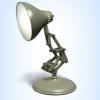Okay, so let's talk image resolution...
-
Similar Content
-
- 23 replies
- 1,640 views
-
animation Let's Talk 'One Piece' / Enthusiasts Unite 1 2
By Venomous,
- 28 replies
- 1,149 views
-
- 52 replies
- 3,480 views
-
- 4 replies
- 203 views
-
- 34 replies
- 2,004 views
-
-
Recently Browsing 0 members
- No registered users viewing this page.



.thumb.gif.e4f929af3c468589c8eea5ff1be52106.gif)


Recommended Posts
Create an account or sign in to comment
You need to be a member in order to leave a comment
Create an account
Sign up for a new account in our community. It's easy!
Join the herd!Sign in
Already have an account? Sign in here.
Sign In Now